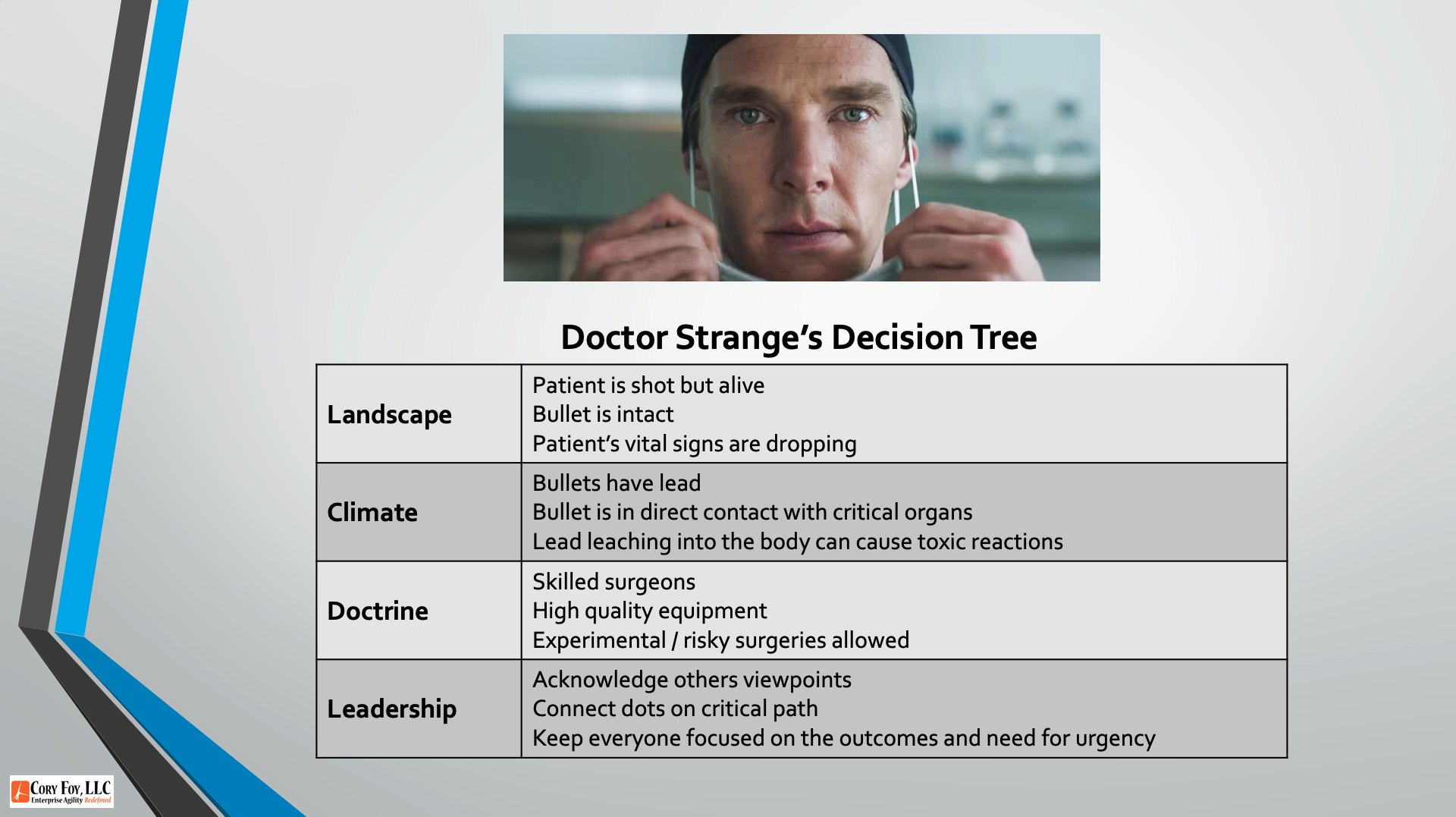Happy Mapping Monday! Today’s #mappingmondays video goes a level up from mapping to look at the strategy cycle, including Doctrine, Landscape and Climate – with a touch of Doctor Strange. As always, a full transcript is included below the video. And If you’re interested in finding out how to apply this to your organization, don’t hesitate to reach out via Twitter or email hello at coryfoy dot com!
Links:
Transcript:
Happy Monday! Welcome to another Mapping Mondays video. I’m Cory Foy, and in today’s video I want to step up a level from maps themselves and talk about how they fit into the broader environment of strategy and operations.
Some years ago I took a class called 30×500, run by Amy Hoy. In it, she talks about the notion of “Idea Quicksand†and how trying to focus on having a great idea locks you into the notion that ideas – how we win – come from inside you. That they are magical and powerful. And this puts you at the mercy of magical and powerful forces.
But we don’t want to be at the mercy of magical forces! Unfortunately, we let ourselves flail around because of them. That’s because we come up with our Purpose as a company – our great thing! – and then we try to lead everyone to succeed in that mission.
However, Simon Wardley talks about a broader cycle – and one that breaks this notion. Instead of Purpose -> Leadership, we instead look at our Landscape, the Climate, and our own Doctrine, and use those to determine the game plays and actions we’ll lead with.
In the movie “Doctor Strangeâ€, our lead character is asked for his advice on a patient who has been shot. The other surgeons know their purpose is saving lives, and based on their ideas this patient can’t be saved, but his organs can help others.
However, Dr. Strange steps back. He looks at the Landscape – the patient has been shot, but didn’t immediately die. The bullet itself is still in perfect shape causing minimal damage. But yet the patient is dying. He then looks at the Climate – what external forces would impact what is going on? In this case, the bullet has lead, and that is leaching directly into the body, causing a toxic reaction. But! This is a reaction that can be reversed – if the bullet can be removed. He then looks at the Doctrine – they have the skills, equipment and support to be able to attempt the surgery. He then Leads everyone through this – helping the other doctors rapidly connect the dots about what is going on, and getting them onboard with the action. In the end, they are able to save the patient (even if Dr. Strange decides to go reckless towards the end).
Likewise, in our businesses, we shouldn’t rely just on gut feel or stories. Gut feel in our Dr. Strange scenario is what led the ER doc to get Dr. Strange. But he was able to apply a framework to collect information and make informed decisions. And because he has those maps of the Landscape, Climate and Doctrine, if someone disagreed, they would be disagreeing with conclusions of the maps – not with the story teller.
And this is critical. A couple of weeks ago I had a conversation with Jabe Bloom of Praxisflow, and one of the quotes I wrote down was “The people telling the story determine what’s possible in the storyâ€. But if we step back and instead approach strategy and actions with maps, we can have conversations about the where and how, and then weave the story to lead others to take action.
So next time you have a decision a group of you are working through, try mapping the Landscape, Climate and Doctrine. See how that changes your story. And then let me know on Twitter at @Cory_foy with the #mappingmondays hashtag! And if you need help coming up with those maps, don’t hesitate to reach out on Twitter or at hello at coryfoy dot com.
Thanks for watching! Be sure to check out all the videos on my blog at https://blog.coryfoy.com/mapping-mondays, and we’ll see you next week for another Mapping Monday!
